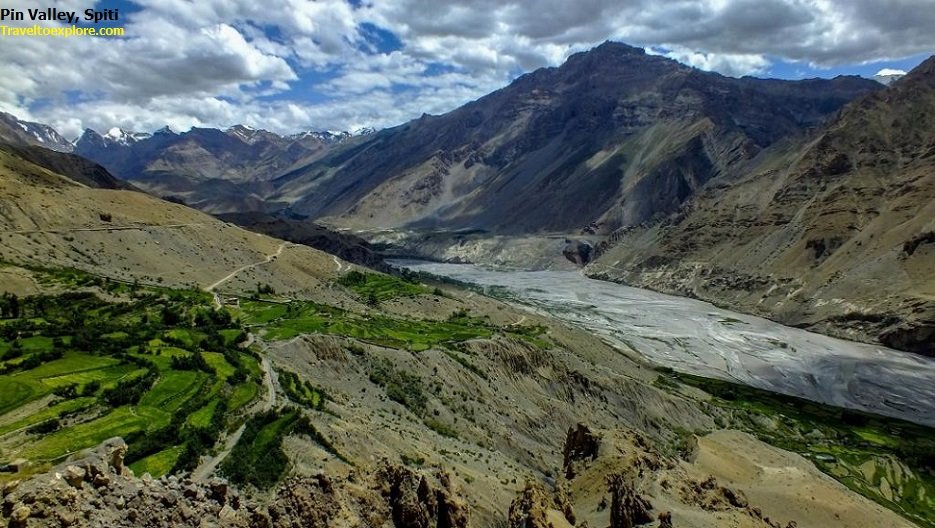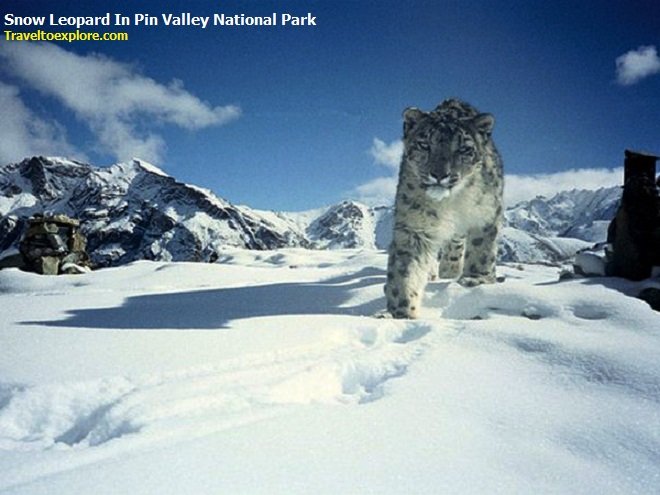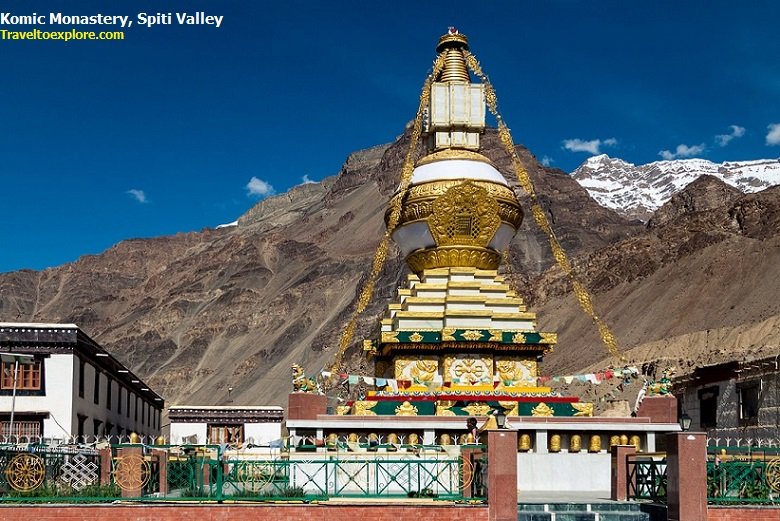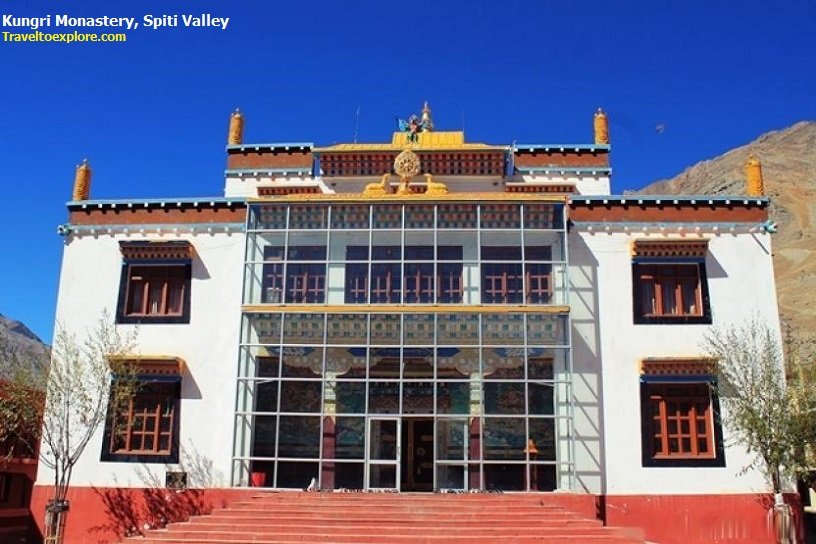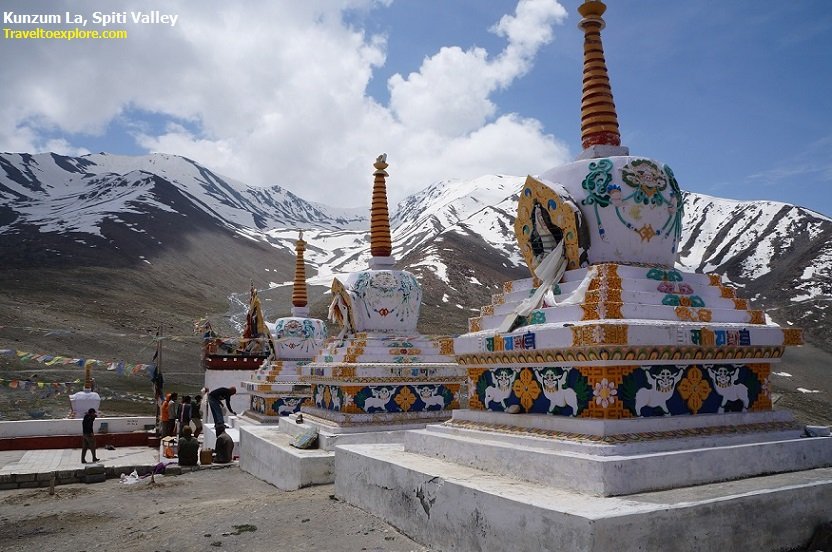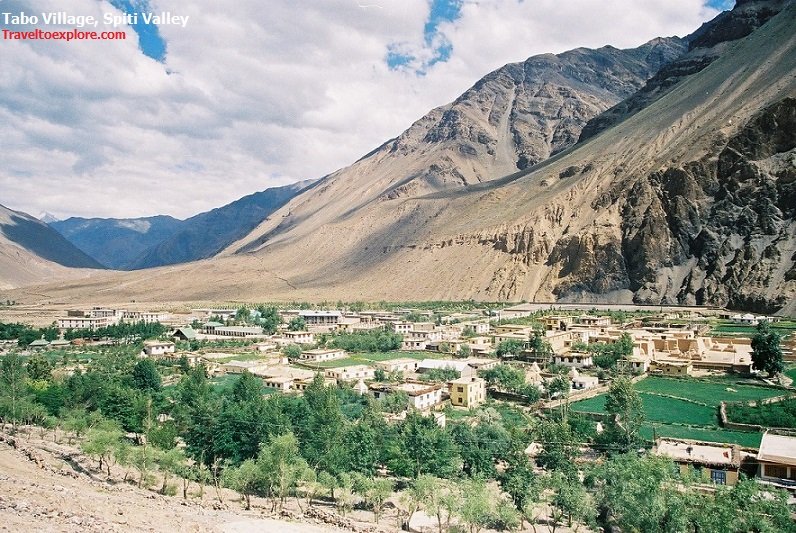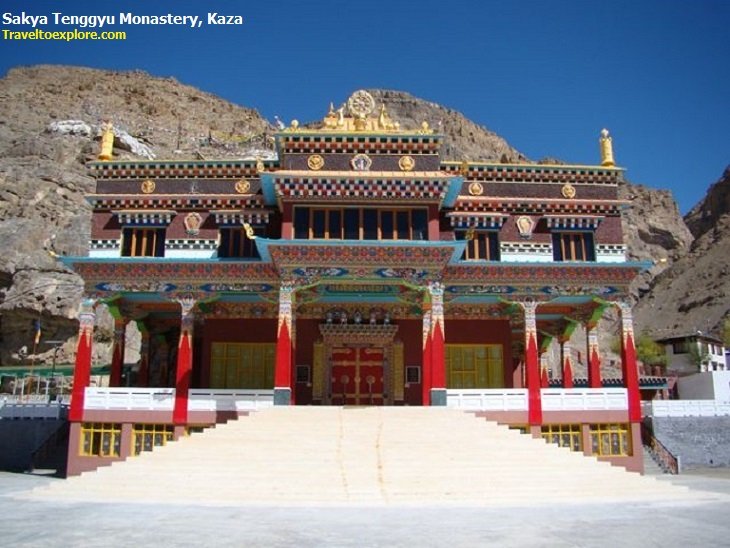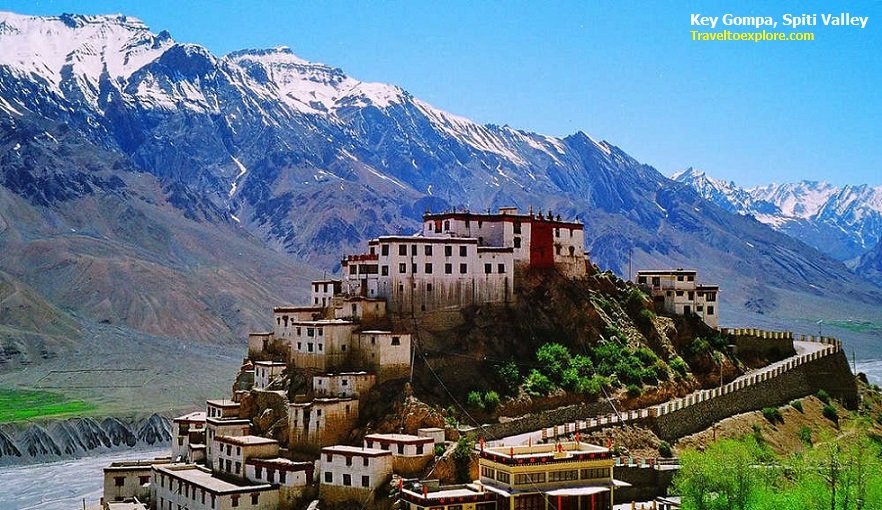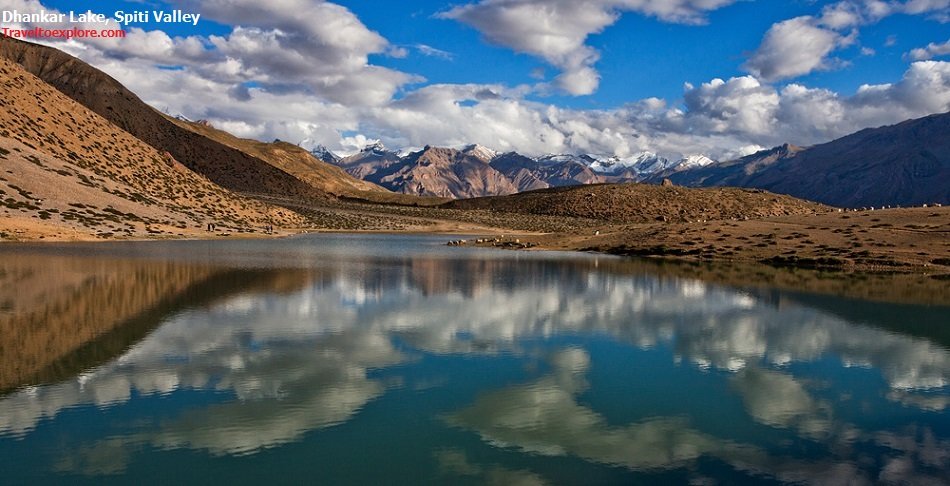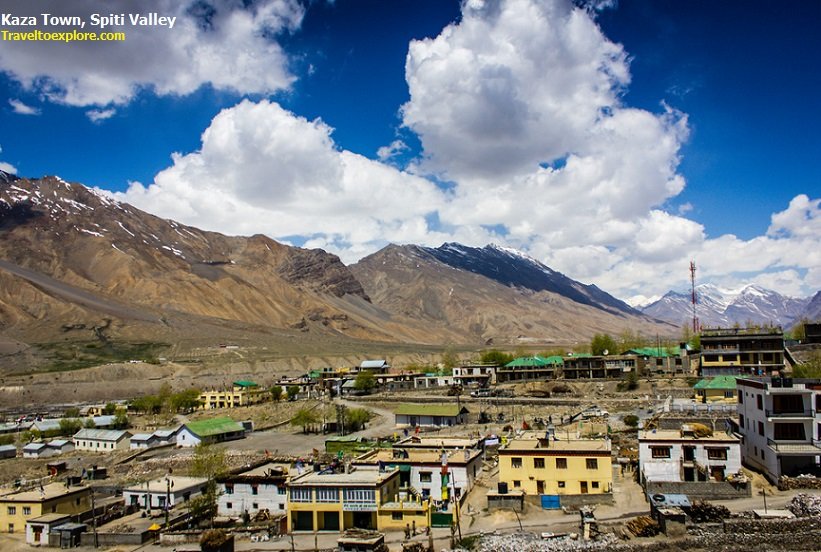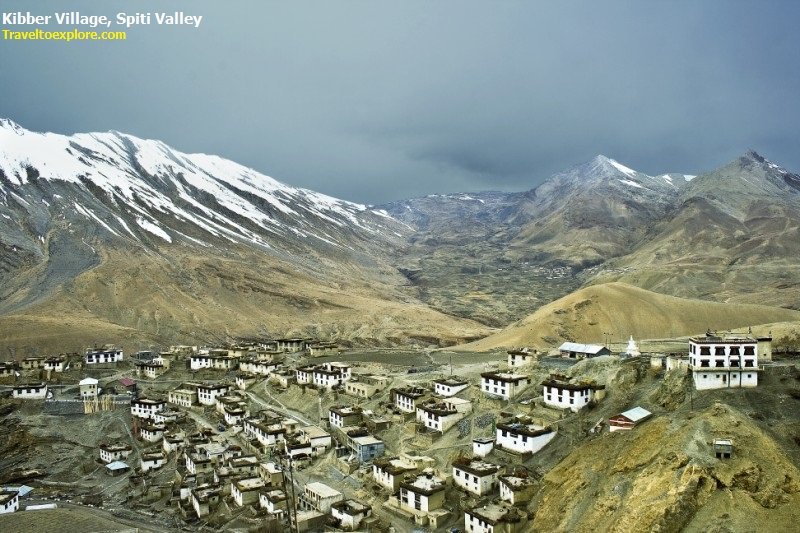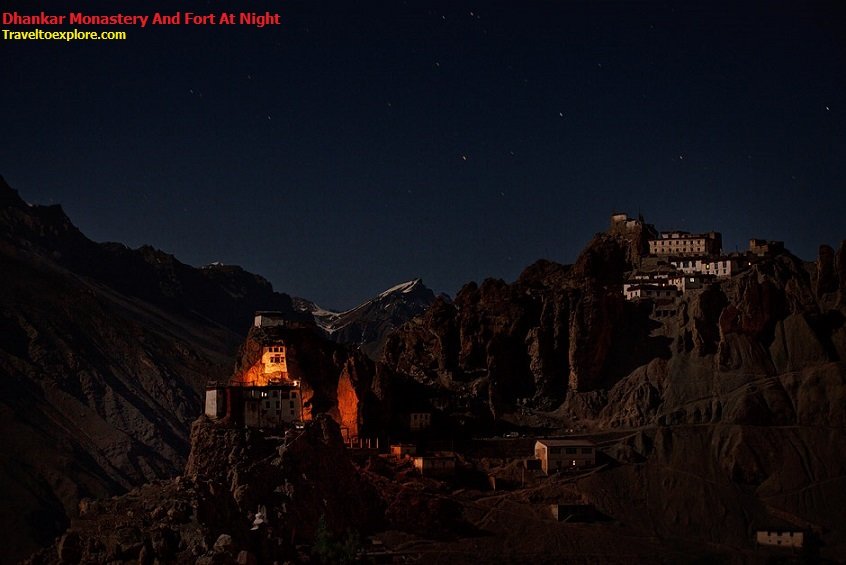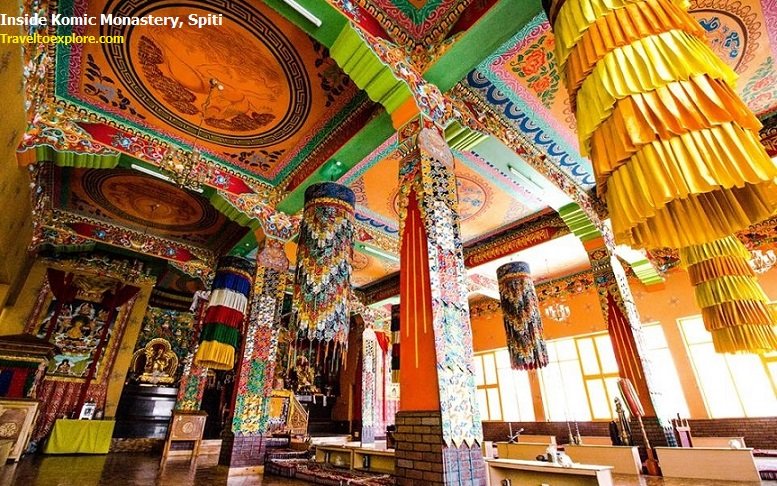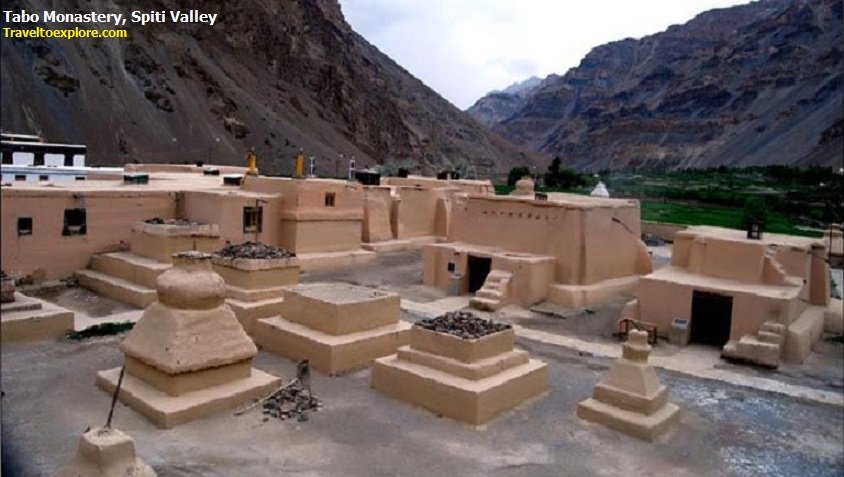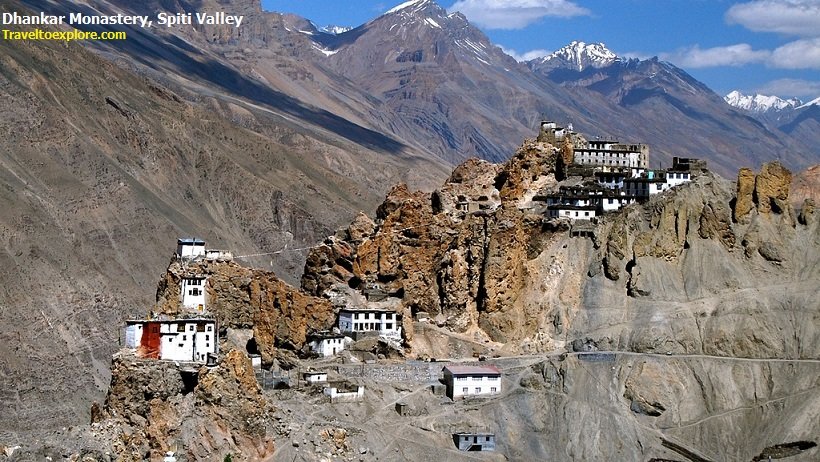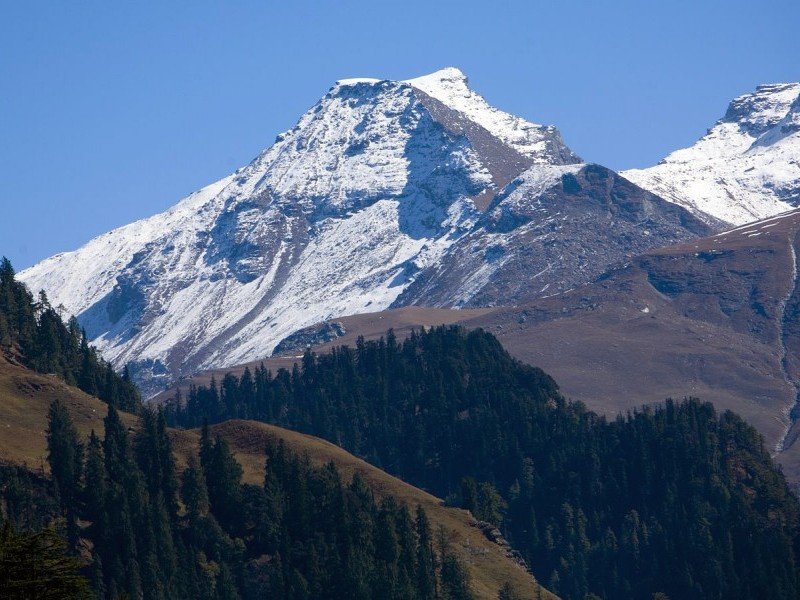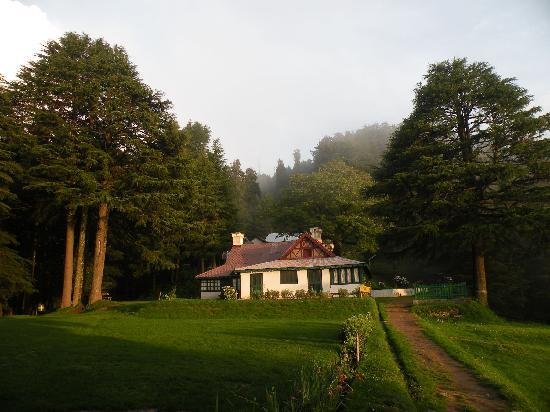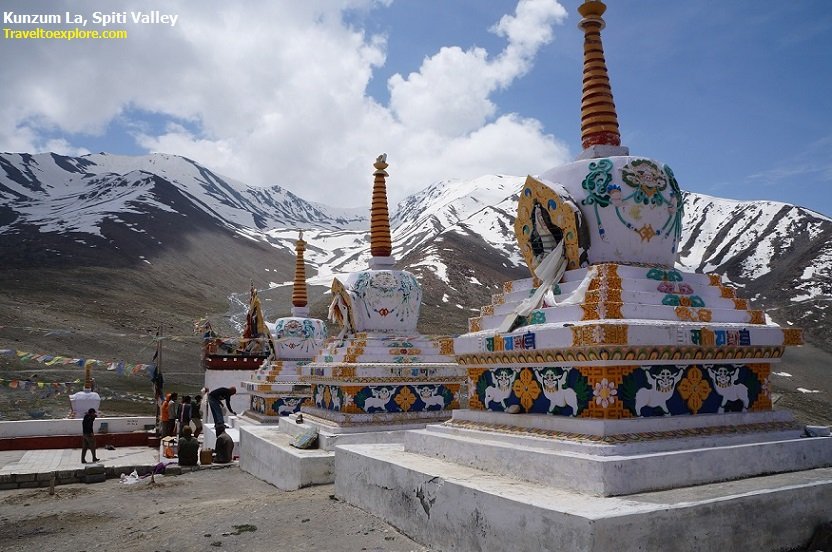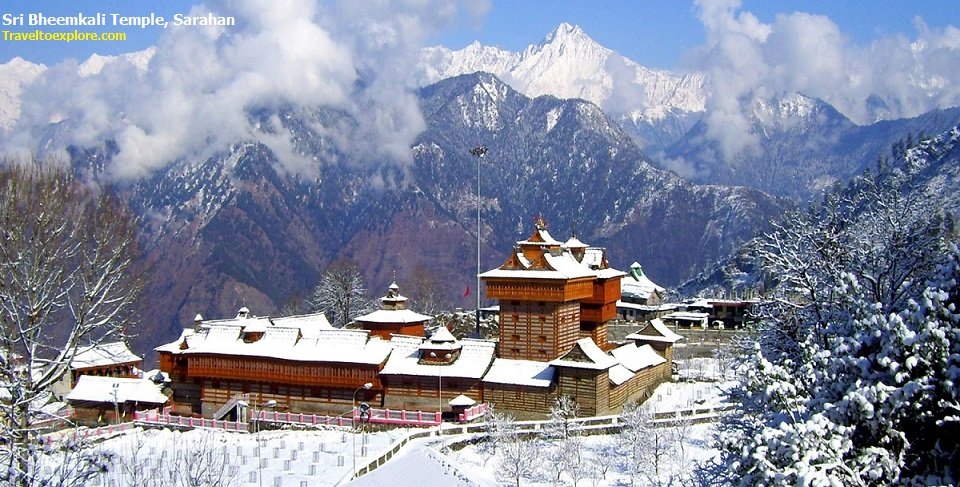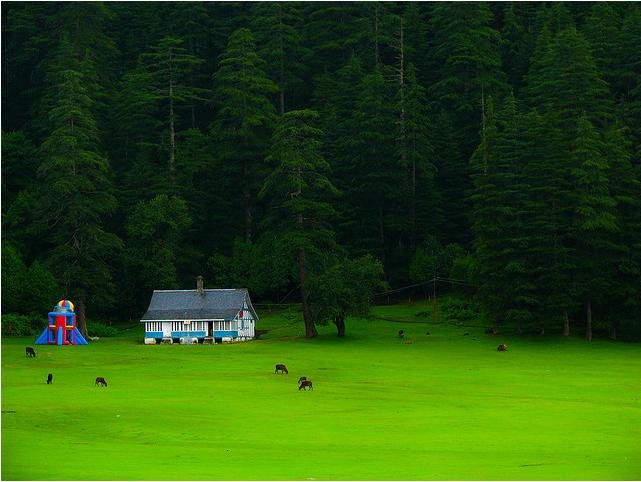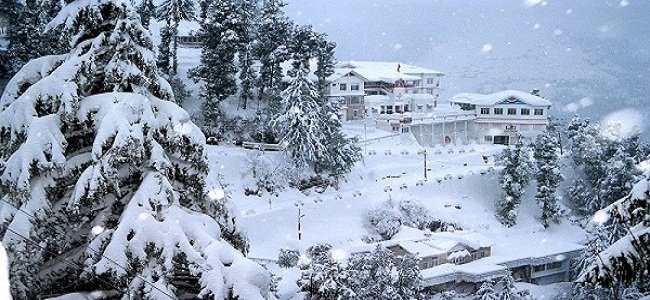Spiti Valley
Highlights
The Spiti Valley, located in Himachal Pradesh in India, is often proclaimed by those who see it to be the world within a world. With an average height of around 12,500 feet above sea level, it consists of stark high-altitude alpine land. This is scattered with small villages and monasteries, and enclosed by soaring snow clad peaks. Spiti" means "The Middle Land” as it is bordered by Ladakh in the north, Tibet to the east, Kinnaur to the south east, and the Kullu Valley to the south. For centuries these remote valleys lived largely isolated from one another, preserving homogenous and distinct cultures and traditions, Spiti along with its twin valley of Lahaul, has retained its pristine charm. Spiti and Lahaul are sub-divisions in Lahaul and Spiti district of Himachal Pradesh. The two valleys are quite different in geographical character. Spiti is more barren with huge and varied natural formations at an average elevation of 12500 feet. It is enclosed between lofty ranges, with the Spiti river rushing out of a gorge in the southeast to meet the Sutlej River. It is a typical mountain desert type area with an average annual rainfall of only 170 mm .We have explored Lahul separately from Spiti under the destination of Keylong which is also the district headquarter of Lahaul and Spiti.
There are two different routes to reach Spiti Valley one via Manali which is shorter route but accessible only in the months of June to October goes through Rohtang Pass- Gramphu- Chattru- Kunzam Pass and Kaza (the headquarter of spiti). The second route which is a longer route but remains open almost throughout the year goes through Shimla- Recongpeo- Nako- Sumdo- Tabo and Kaza.
Best Time To Visit Spiti
Best time to visit the Spiti valley is June to October although there are some good rains experienced in kinnaur Valley in resent past during mid July to August hence along with landslides at some pockets, Road conditions also gets deteriorate during mid July to August. It is advisable to avoid travel towards Spiti Valley during this period. You can also travel to spiti valley in May if you like to watch snow clad mountains, want to play in snow, like to travel on isolated roads with very less tourist counts but since the valley just start to open up in May there will be less facilities in hotels during this month and its only accessible from shimla route. The ideal time to visit spiti is September to mid October when outman blooms in its true colours and the entire valley filled with orange leaves.
What To See
Tabo
Situated at the hight of 3050 Mtrs, 163 km from Kalpa and 48 Km from Kaza is the ancient village of Tabo, situated on the left bank of river Spiti. Flanked on either sides by hills, it has one of the most important Buddhist monasteries regarded by many as only next to the Tholing Gompa in Tibet. It is also known as the Ajanta of the Himalayas. Tabo is the largest monastic complex of Spiti which has since been declared a protected monument under the aegis of Archaeological Survey of India.
Kaza
Situated at the hight of 3600 Mtrs., Kaza is 210 Km from Kalpa, 202 km from Manali. The headquarters of Spiti sub-district, Kaza lies on the bank of river Spiti. In earlier times, it was the capital of Nono, the Chief of Spiti. It has a Buddhist Monastery and Hindu Temple.
Kibber
Situated at the hight of 4205 Mtrs., 18 km from Kaza. The highest village in the world which is connected by motor able road and is the highest habitated village in the world which has its own polling station during elections.
Dhankar
The beautiful Dhankar Village is one of the most stunning attractions in Spiti Valley, a home to the most beautiful and awe-inspiring Dhankar Monastery and Dhankar Fort that are perched on the top of the hill in Dhankar, that were built in the Central Tibetan pattern. The monastery is located right below the Dhankar Fort, which is built on a 300 meter high spur. It is one of the world's most amazing settings for a fort, however, the ground of this village is very weak due to erosions caused by wind and rain, and the Dhankar Fort is on the stage of worsening because of soil erosions. The view of Dhankar Fort, which has been declared among the 100 most endangered sites in the world, is captivating and a lot of visitors come here to capture the beauty of this stunning attraction. This fort is perched just above the Monastery with the key structure supported on a cliff base. One can reach Dhankar Fort through a Motorabe road, which leads to a passage to climb towards the fort. . The view of Dhankar Lake from the Dhankar Fort is simply remarkable and tourists can have a wonderful time indulging in pleasures such as photography and sightseeing
Kunzum La
Kunzum la is one of the highest motor able passes across the Kunzum range at an altitude of 4551 mts and 75 Kms from Kaza. The road over the pass is not a road. Just a dirt track leading upto the top of the hill. It links the Kullu Valley and Lahaul Valley with the Spiti Valley of Himachal Pradesh. It serves as an entrance pass to the Spiti valley from Lahaul. Goddess Kunjum (Durga/Parvati) resides in a temple on the Kunzum top and keeps guard over the pass and wards of the evil. Visitors normally do a round around the temples to seek blessings. Chandratal Lake is 7 km from Kunzum Pass.
Chandra-Tal Lake
Chandratal lake is situated at a height of 4300 m and 7 kms away from the Kunzum Pass in Spiti and Lahaul district of Himachal Pradesh India, the lake got its name because of its crescent shape. Boasting of a circumference of about 2.5 kms, the deep blue-water of Chandra Tal Lake is the source of the Chandra river.
The Chandratal lake, once a halting place for traders who went to Spiti and the Kullu valley from Tibet and Ladakh attracts a large number of photographers and adventure lovers. The lake is normally blue but changes colour with the colour of the sky. Chandra Bhaga mountain range forms the perfect backdrop for the lake.
Pin Valley National Park
Pin Valley was declared a National Park in 1987 and the park’s core zone is stretched over 675 sq km and the buffer zone extends over 1150 sq km. Foreign nationals are not allowed inside the park. Indians have to take permit to enter the park.. It is located in the cold desert region of the Spiti valley. With its snow laden unexplored higher reaches and slopes, the Park forms a natural habitat for a number of endangered animals including the Woolly Hare, weasel, red fox, marten, Tibetan Gazelle, Snow Leopard and Siberian Ibex. It is also home to birds like pika, snow cock, bearded vulture, chukor, golden eagle, griffon, Himalayan chough and raven.
Spreading south of Dhankar Gompa near the Tibetan border, the Pin Valley National Park marks the border between the formerly separate districts of Lahaul and Spiti. The elevation of the park ranges from about 3,500 mts. near Ka Dogri to more than 6,000 mts. at its highest point.
Monasteries of Spiti Valley
Key Monastry
The spectacular Key monastery is located at an height of 4116m and 7 km from Kaza. It is the largest monastery in Spiti Valley. Established in the 11th century has ancient Buddhist scrolls and paintings. It also houses large number of Buddhist monks and nuns and a cafeteria. It is the biggest monastery of Spiti Valley and a religious training centre for Lamas. In the architectural definitions given to various monasteries, Ki falls in the ‘Pasada’ style which is characterised by more stories than one and often plays the role of a fort-monastery. Key Monastery has three floors, the first one is mainly underground and used for storage. One room, called the Tangyur is richly painted with murals. The ground floor has the beautifully decorated Assembly Hall and cells for many monks.
Key Gompa is said to have been founded by Dromtön (Brom-ston, 1008-1064 CE), a pupil of the famous teacher, Atisha, in the 11th century. This may however, refer to a now destroyed Kadampa monastery at the nearby village of Rangrik, which was probably destroyed in the 14th century when the Sakya sect rose to power with Mongol assistance.
Tabo Gompa or Chos- Khor
The Tabo Gompa, or Buddhist monastery, is second in importance only to the Tholing Gompa in Tibet in the entire Himalayan region. It was developed as an advanced centre for learning by the great teacher and translator Lotsawa Rinchen Tsang Po, the king of western Himalayan Kingdom of Guge -- also known as Lha Lama Yeshe O'd or Mahaguru Ratnabhadra.. It is known that the Chos-Khor at Tabo commanded great importance, and hosted for a considerable period, many great scholars and translators in the Buddhist history studied here. To date, it is the preserver of the Buddhist Legacy and is one of the most important Gompa of the entire Tibetan Buddhist world. It was founded in 996 AD, stands on the barren, arid, snow covered, cold and rocky desert of the Tabo valley at a dizzying height of 3050 m. Not much has changed since 996 AD at the Tabo Monastery. The lamas still perform tantric rites in the temples. They perform most of their morning 'poojas', and also live in the 'new' temple. Chanting starts at 6 a.m. sharp. The monastery complex holds 9 temples, 23 chortens, a monk's chamber and an extension that houses the nuns chamber.
The Nine Temples of Tabo Gompa
The Temple of the Enlightened Gods
This is also known as the assembly hall (du-khang) and is quite the core of the complex. This has a vestibule, an assembly hall and a sanctum. The central figure of this hall is the four-fold figure of Vairocana.
The Golden Temple
Once said to have been layered with gold, this temple was exhaustively renovated in the 16th century by Senge Namgyal, ruler of Ladakh. The walls and ceilings are covered with outstanding murals.
The Mystic Mandala Temple
The wall facing the door has a huge painting of Vairocana who is surrounded by eight Bodhisattvas. Mystic Mandalas cover the other areas. Here the initiation to monkhood takes place.
The Bodhisattva Maitreya Temple
This has an image of the Bodhisattva Maitreya that is over six meters high. The temple has a hall, vestibule and sanctum. The array of murals within also depicts the monastery of Tashi-Chunpo and Lhasa's Potala palace.
The Temple of Dromton
A small portico and long passage leads to its hall. The doorway is intricately carved and the inner walls are covered with murals. It lies on the northern edge of the complex and is regarded to have been founded by Dromton (1008-1064 AD) an important disciple of Atisha.
The Chamber of Picture Treasures
This is a kind of an ante room attached to the Enlightened Gods temple. It is covered with beautiful paintings of the Tibetan style.
The Large Temple of Dromton
The second largest temple in the complex, this has a floor area of over 70 sq m, while the portico and niche add another 42 sq m. The front wall has the figure of Sakyamuni flanked by Sariputra and Maha Maugdalayana. The outer walls depict the eight Medicine Buddhas and Guardian Kings. The wooden planks of the ceiling are also painted.
The Mahakala Vajra Bhairava Temple
This enshrines the protective deity of the Galuk-pa sect. Fierce deities fill the room and it is only entered after protective meditation. At times it is called the 'temple of horror'.
The White Temple
The walls of this temple are also adorned leaving a low dado for the monks or nuns to lean against.
Dhankar Monastery
Dhankar means 'a place in the mountains unreachable for strangers'. Located around 24 km from the town of Kaza, the Dhankar Monastery stands at an altitude of 12,774 feet. The 16th century old fort monastery has also served as a prison in the erstwhile era. A new monastery stands in the small village of Shichilling below the old monastery. There are beautiful wall paintings, available inside the monastery that tourists can see on their visit.
The old monastery complex comprises a number of multi-storeyed buildings perched together. This old complex, also known as the Lha-O-pa Gompa has five different halls including Kanjur, Lhakhang, and Dukhang. The highlight of the monastery is the a statue of Vairochana or Dhayan Buddha with 4 figures seated back to back.
Kungri Monastery
Kungri Monastery is the main Monastery of the pin valley founded by Guru Padmasambhava, it is one of the oldest monasteries in the entire Spiti Area. The monastery is situated on the side of the Pin Valley about 20 Kms from the Kaza and 4 Kms from Sagnam the principal village of pin valley. It belongs to the Nyingmapa sect.
Komic Monastery
Komic monastery also known as the Tnagyud Monastery has the honor of being the world’s highest motorable monastery at 4587 mts overlooking the Komic village and mountain peaks. In Komic, there are only about a dozen houses with the total population being between 50-60 people. Other than this, there are the Lamas staying at the monastery throughout the year. The distance between Kaza to Komic is 18 Kms.
How To Reach
By Road
There are two different routes to reach Spiti Valley one is via Manali which is a shorter route but accessible only in the months of June to October goes through Manali- Rohtang Pass- Gramphu- Chattru- Kunzam Pass and Kaza (the headquarter of spiti). The second route which is a longer route but remains open almost throughout the year goes through Shimla- Recongpeo- Nako- Sumdo- Tabo and Kaza.
By Air
The Nearest airport is Bhuntar (Kullu) which is 250 Kms from Kaza If you are taking Manali route. In case you are going Kaza via Shimla than Shimla Airport is the closest Airport which is 470 Kms from Kaza.
By Rail
The closest Railhead is Chandigarh for both of the routes which is having good connectivity with rest of the country although Shimla is also having railway connectivity but with narrow gage the connectivity is limited to kalka in Harayana.
Gallery
Related Package
Related Hotel
No Hotel available
Reviews
Excellent
4.6 / 5.0
90% recommend this package
Score Breakdown
- (58)
- (132)
- (89)
- (58)
- (9)
Average Rating For
- Cleanliness 4.5
- Service 4.5
- Comfort 4.2
- Condition 3.8
- Neighbourhood 4.4
